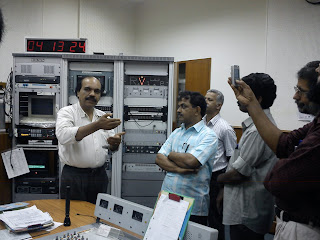

The image was taken by the spacecraft's camera, JunoCam, on Aug. 26 when the spacecraft was about 6 million miles (9.66 million kilometers) away. The image was taken as part of the mission team's checkout of the Juno spacecraft. The team is conducting its initial detailed checks on the spacecraft's instruments and subsystems after its launch on Aug. 5.
Juno covered the distance from Earth to the moon (about 250,000 miles or 402,000 kilometers) in less than one day's time. It will take the spacecraft another five years and 1,740 million miles (2,800 million kilometers) to complete the journey to Jupiter. The spacecraft will orbit the planet's poles 33 times and use its eight science instruments to probe beneath the gas giant's obscuring cloud cover to learn more about its origins, structure, atmosphere and magnetosphere, and look for a potential solid planetary core.
The solar-powered Juno spacecraft lifted off from Cape Canaveral Air Force Station in Florida at 9:25 a.m. PDT (12:25 p.m. EDT) on Aug. 5 to begin its five-year journey to Jupiter.
Does this photograph illustrate a special perspective of our role and place in the universe ? Do we see a humbling yet beautiful view of ourselves ?

















